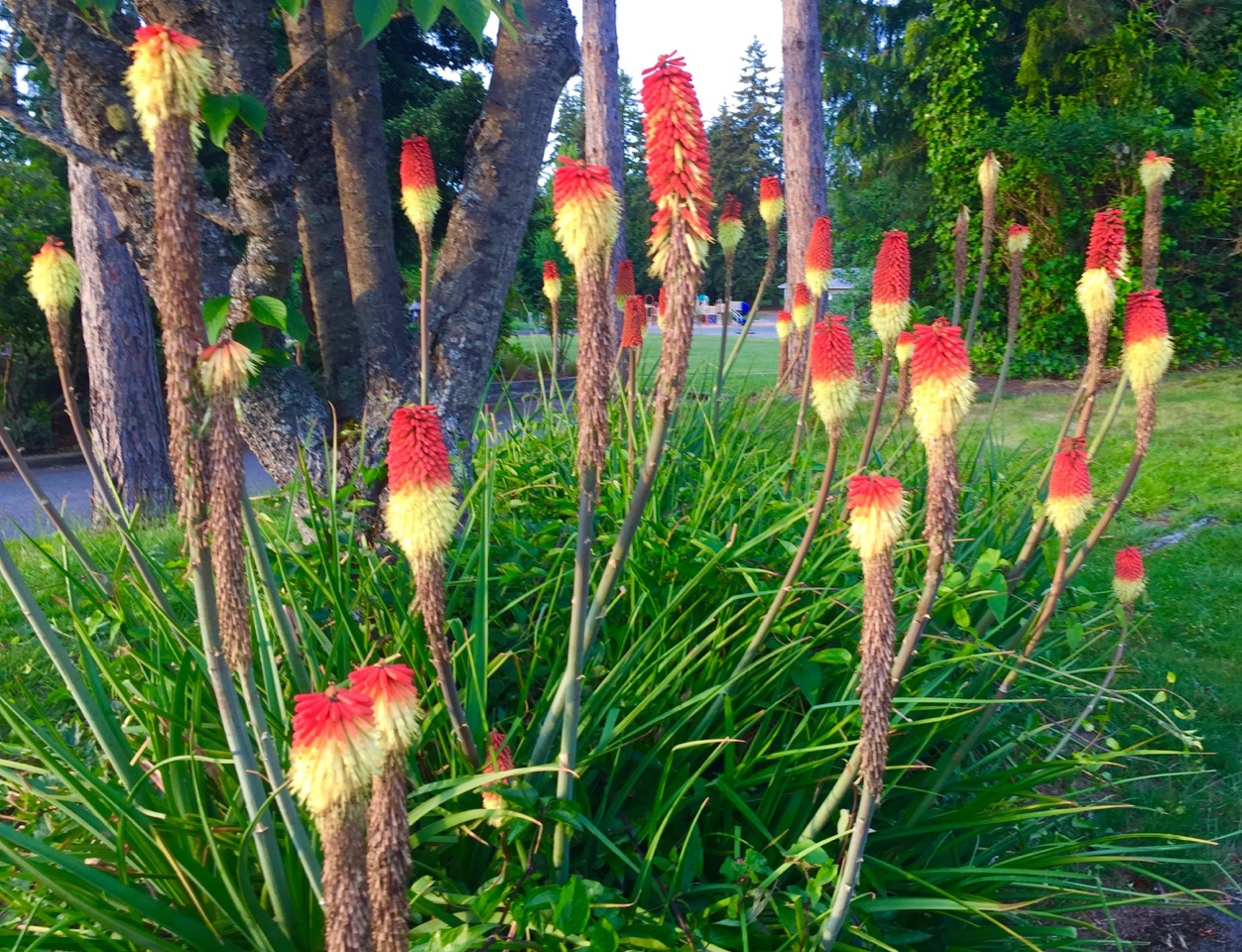

Yellow Paintbrush has the same uses as Indian paintbrush except this one has the subtle flavor of mushrooms when fried or cooked with other foods. Some of the identification markers to look for are “hairs” on the leaves and/or stem, a woody or soft stem, a green or brown stem, if they grow singly, in groups, or in huge masses, or leaf shape and the location or time of year it flowers. All the Paintbrush species have been used as a fresh mashed poultice applied to wounds to speed healing and stimulate an immune response. For the field botanist, identification can be tricky as those species with overlapping geographical ranges easily hybridize, making it a mess for those figuring out the official distinct individual species.

This can also be found in poinsettias (think Christmas!) and bougainvilleas where the bracts are the bright flowery parts while the actual flowers are tiny and nondescript. A closer look will show tiny bright yellowish-green tubes – often with the stamen sticking out from the end of these floral tubes. While what most of us consider to be the flower part of the Indian paintbrush plant, we are actually looking are the bracts which are nothing more than colored leaves near where the flowers are located. While being often variable in color from other species and sometimes its own species, they are not easily confused with other wildflowers, and are not easily forgotten. There are other Paintbrushes more common in southern Oregon.One thing these plants do have in common is their general appearance.
#Yellow paintbrush plant of oregon series
The inflorescence is a series of bracts in shades of bright red to yellowish.

The leaves are variable in shape and up to 8 centimeters long. It is greenish to purple in color and may be hairless to quite hairy. Yellow-green leaves green bracts white flowersīright green, narrow leaves green bracts with white tips white flowers This is a perennial herb growing an erect stem up to about 60 centimeters in maximum height. Shrubby hairy narrow pale leaves with a yellow cast light yellow bracts grows in eastern Washington parasitic on Stiff Sagebrushĭark, purplish leaves yellow-green bracts with white tips yellow flowers with red tips grows near the ocean Narrow leaves with wrinkled edges bracts have green bases, yellow band, bright red tips grows in eastern and southern Oregon Green, two lobed leaves yellow-green bracts white flowers grows in eastern Oregonīranches stems hairy, multi-lobed leaves with a gray cast bright red bracts red flowers grows in eastern Oregon A close-up of the calyx and corolla of what may be stiff yellow indian paintbrush as seen high along the Valley Trail at the Little Spokane River Natural. Small plant narrow green leaves almost white bracts white flowers grows in eastern Washington and Oregon Small plant narrow green leaves very light yellow-green bracts yellow flowers grows in the Wallowa Mountains Three lobed leaves, center lobe wider magenta colored bractsĥ-7 lobed leaves bright yellow bracts almost glow bracts overlay each other making narrow plant top threatened in Washington, may be extinct in Oregon Very deeply cut leaves, with lateral lobes as wide as the center grows in rocky areas over 3000 feet Upper leaves notched green flower extends beyond bracts grows in subalpine meadowsĭeeply cut, hairy leaves, with lateral lobes as wide as the center, often shaped like a cross grows in rocky areas over 3000 feet

Hairy upper leaves have a large lobe on each side and often a small tip lobe on each sideģ-5 lobe leaves pink to rose bracts grows in subalpine and alpine areas Very little hair non-notched leaves grows near the coast Very little hair non-notched leaves grows above 3000 feet Plants from the same genus that lack the brightly colored bracts are often called Owl's Clover. What looks to be flowers are actually the colourful red-orange bracts that hide the tubular yellow. Description: Castilleja chromosa/angustifolia has bristly gray-green to purple-red herbage. Many paintbrushes are partially parasitic on other plants. Latin name: Castilleja chromosa or angustifolia. The true flowers are usually a light yellowish green and have five petals. The bright colors that we usually think of as flowers are actually specially adapted bracts. Tips on identifying Paintbrushes and Owl's Clover


 0 kommentar(er)
0 kommentar(er)
